Supermicro ARS-210ME-FNR Topology
Doing a quick check of the topology, we had this system setup as a single monolithic CPU. Everything was attached to the processor. What one will quickly notice here is that the caching structures are nowhere near what we see on AMD’s current generations. More on Genoa soon.
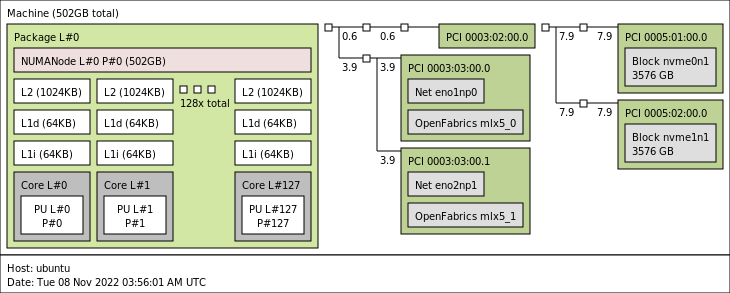
Here is a quick lscpu output:
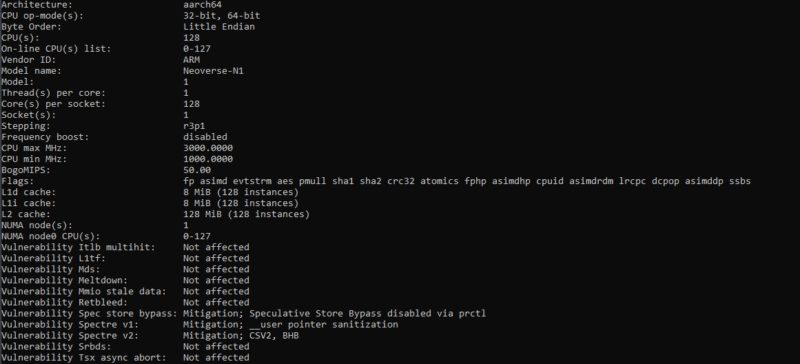
On the networking side, here are the ConnectX-4 Lx NICs:
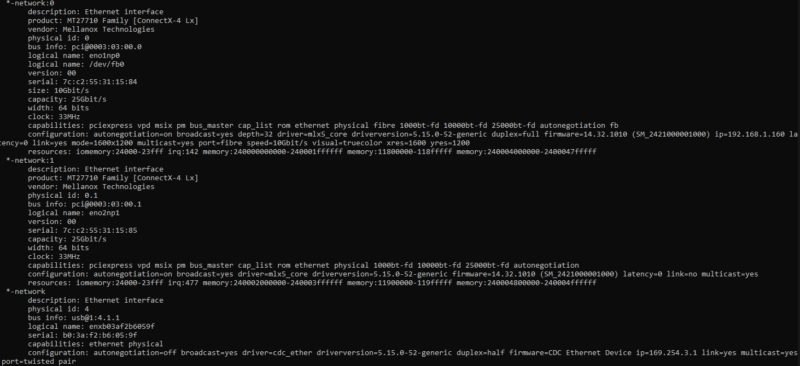
If this looks like standard Ubuntu output, that is because it is. More on that shortly.
Next, let us get to the management.
Supermicro ARS-210ME-FNR Management
The Supermicro server was running something very different. It had OpenBMC instead of Supermicro’s standard solution. Supermicro has different options here, but we are really seeing OpenBMC pick up in the market, so this was cool to look at.

The dashboard was not as busy as many we see these days, but it was functional.
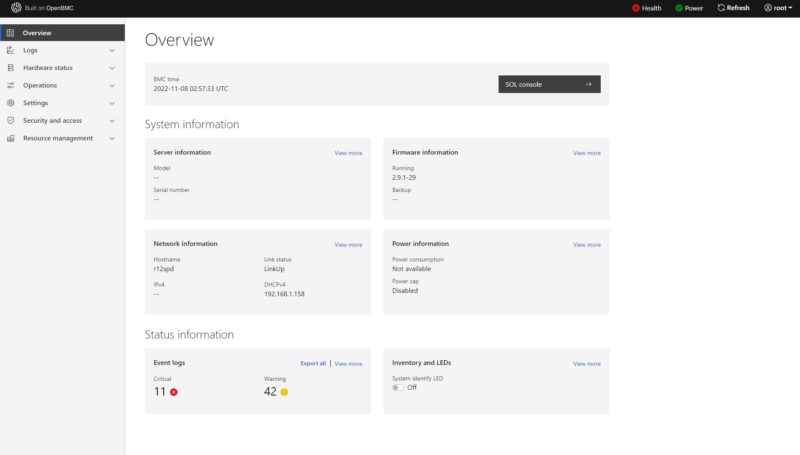
Here we can see in the system inventory the Ampere Altra Max M128-30 processor installed.
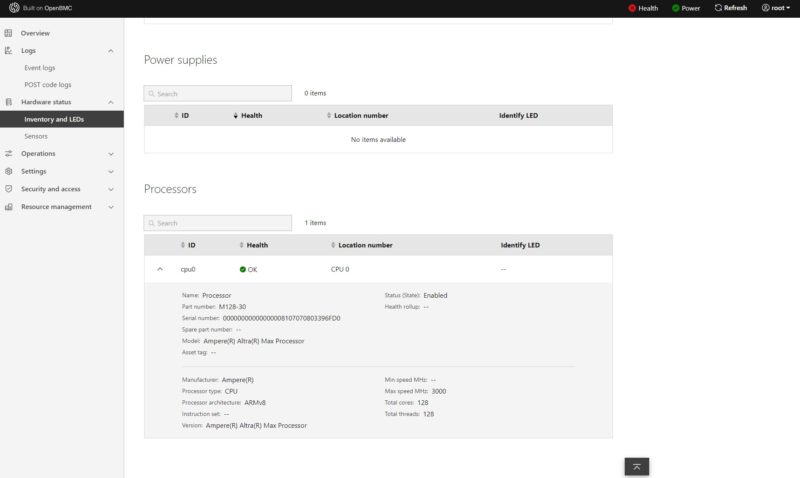
OpenBMC included functions like Virtual Media and also SOL/ iKVM functionality.
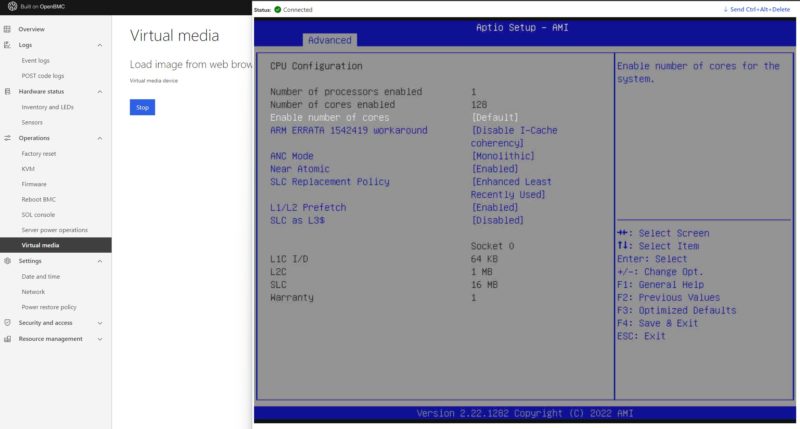
There was even a feature we have wanted in Supermicro servers for years, and this is the first we have tested that has it: the ability not just to reboot a server but to select a boot action from the management interface!
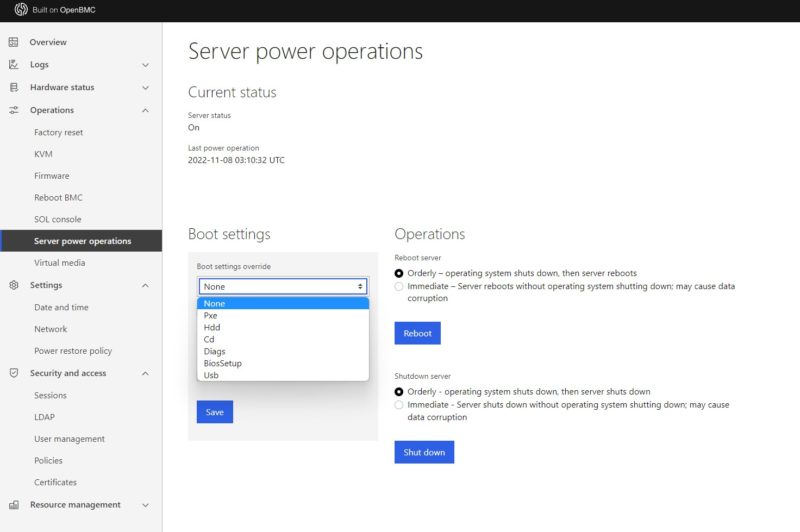
Overall, OpenBMC worked fairly well. We may even have another platform with it soon on STH. First, let us get to the performance.
Supermicro ARS-210ME-FNR Performance
In terms of performance, the Ampere Altra Max we largely liken to the performance of between an AMD EPYC 7763 and an AMD EPYC 7773X on the integer side. On the floating point side, AMD is faster, and that will change this week with Genoa. Given that, we recently tested NVIDIA’s Ampere HPC development kit, and we wanted to compare the single socket M128-30 performance between that system and this one.
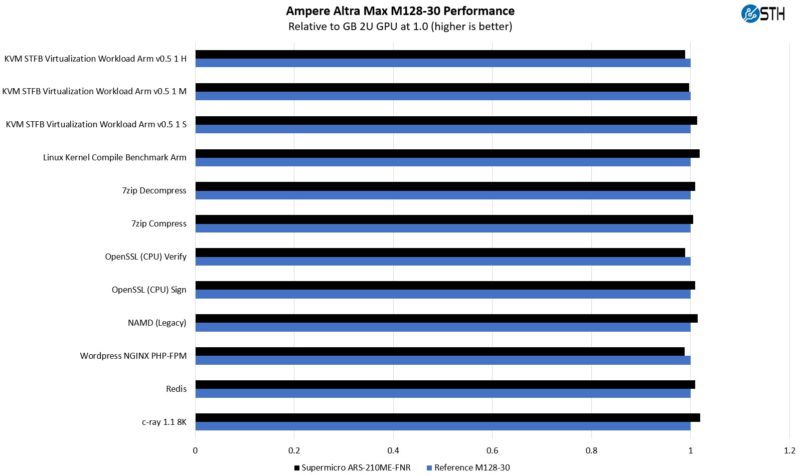
Here we get around a 4.5%(-ish) delta between the two systems, but we will call this one within our test variation. This is a big deal. It is something we can commonly achieve on the x86 side, but Arm servers have had fairly wildly varying performance over the years depending on the vendor and model. This is actually a great showing.
Next, let us get to OS and then power consumption.




Very cool server. It’s nice to see something smaller for a change. Only one question… How long until we see an Altra or Altra Max based high-end workstation? I think THAT would be really neat, what with all the ground Ampere has gained so far.
Hi Stephen
We want to introduce you to reference the following 2U4GPU ArmServer which is another Server of the Mt. Hamilton program, four double-width GPUs with IO assessable in a 2U form factor system.
https://www.supermicro.com/en/products/system/megadc/2u/ars-210m-nr
Regards,
Roger
It’s great to see an Ampere server reviewed like a x86 server at STH. This makes it seem like they’re real not the $hitb0xes of Cavium
Stephen Beets, haven’t you see Avantek’s ARM desktop offering yet? If not, then https://store.avantek.co.uk/arm-desktops.html
@KarelG
Thanks so much for your reply. I was not aware of either Avantek or their products until you posted (I’m sure Dr. Cutress, aka TechTechPotato, covered their products at some point, I just either missed that or I simply don’t remember it). So cool to see that Ampere’s Altra and Altra Max processors are actually usable for things other than cloud and edge servers. Also, I like the case design of the Avantek workstations. Very neat. Thanks for sharing, man. Hopefully one day some years from now, I’ll find an Altra or Altra Max on eBay to buy and add to my CPU collection. :-)
@Roger Chen
Thank you for your reply and link. I wasn’t necessarily thinking of buying one (I’m not a telco nor do I have anywhere near enough money to afford one), but I did visit your link just to see what was there. Very nice and I’m wishing you and the Supermicro team all the best, saleswise. :-)
That’s a clickbait image. The CPU doesn’t really run outside of the server, it is on the inside. Stop making things up.
Can’t say there’s any surprise there. ARM will never be suitable for heavier workloads without making itself identical to x86 in terms of complexity, power consumption, and price. It works when used for its intended purpose – low-power devices that don’t need heavy CPU resources.